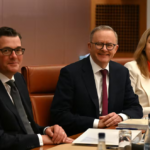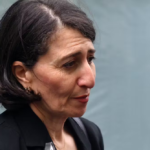Building a national culture of philanthropy
How can we make Australia more philanthropic? Catherine Fritz-Kalish says the key is to involve your friends and family.
We all wish the world was a better place, and the good news is we can all make a practical difference. Philanthropy is not the preserve of the wealthy – every one of us can spare some time, lend our talents and skills, or donate a little money towards a worthy cause.
Although giving something may appear entirely altruistic, in my experience promoting the welfare of others offers as much to the giver as to those who receive. Benefactors enjoy a fantastic feeling when they contribute to their community and connect with other people. Giving, in all its forms, is hugely rewarding – and somewhat addictive.
There are 600,000 charities in Australia, and nine new ones are registered every day, according to the national charity regulator ACNC. Does this mean we’re becoming more philanthropic as a nation? Not necessarily – recent figures suggest that fewer Australians are giving to charity, but those who do are giving more. Overall, donations increased by $30 million in 2014, while the numbers of donors fell.
So how can we encourage others to be more philanthropic, as well as give something ourselves? Ho do we nurture an Australian culture of philanthropy?
My most enriching experiences come when my friends and family are involved in the process. As more people make connections though giving, communities of like-minded people soon form. These informal philanthropic communities take many different forms, but the most powerful will span the generations, encouraging positive action not only today, but for years in the future.
One effective approach is to form or join a giving circle – a group of families who come together to pool their resources and help a carefully chosen cause or charity.
Giving circles are a powerful way for a small gropu of people to make a huge difference.
So how does it work?
- 10-15 families, who are inspired by the prospect of committing to giving and recognise the greater impact that can be achieved by pooling their resources, come together.
- Each family commits to give away a nominated amount per year. Half will be given based on the group choosing some meaningful projects everyone engages with.
- The remaining half will be given by each family to organisations of their choosing, either through the circle or individually, and reported to the rest of the group.
- Each family nominates the charities and ideas they want to support, so they can identify overlaps and common causes that are supported.
- The group will find common interests and identify common values.
- Informed by research and passion, the group democratically finalises the project or projects that will receive half of the joint funds – and makes the contribution to bring that to life.
There are opportunities for kids and their parents to get involved and engage with the organisations that are supported in addition to contributing financially. Involvement can take many forms:
- Group members can monitor and measure their investments and the impact on projects and causes.
- Invite speakers, philanthropists and organisations to address the giving circle members and to provide visibility on where their money goes and its impact.
- Visit some of the organisations that are supported to see the results in person with their families.
- Volunteer through the charities.
Together, members of the giving circle watch their investments in the community yield benefits and build bonds of friendship and philanthropy that inspire others to want to join a giving circle and/or start one of their own!
Philanthropy is not someone else’s responsibility. Our children should be raised to know that giving is both expected of them and deeply rewarding. Helping to build a national culture of philanthropy may be our greatest gift to the future of all.

Catherine Fritz-Kalish is the co-founder and Managing Director of Global Access Partners (GAP) and Director of the International Centre for Democratic Partnerships (ICDP) and ICDP Foundation. She also holds Board positions for a number of not-for-profit organisations.













